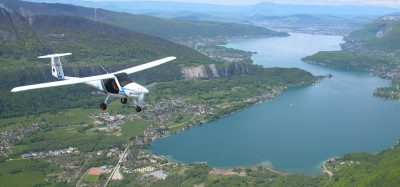A dynamic approach to ensuring future air traffic control recovery
- Like
- Digg
- Del
- Tumblr
- VKontakte
- Buffer
- Love This
- Odnoklassniki
- Meneame
- Blogger
- Amazon
- Yahoo Mail
- Gmail
- AOL
- Newsvine
- HackerNews
- Evernote
- MySpace
- Mail.ru
- Viadeo
- Line
- Comments
- Yummly
- SMS
- Viber
- Telegram
- Subscribe
- Skype
- Facebook Messenger
- Kakao
- LiveJournal
- Yammer
- Edgar
- Fintel
- Mix
- Instapaper
- Copy Link
Posted: 12 April 2021 | Sandy Legget | No comments yet
Sandy Legget, General Manager of Air Traffic Services – Edinburgh for Air Navigation Solutions Ltd. (ANSL), writes of the new challenges presented by COVID-19 and discusses ATTIS – the provider’s response to managing the pandemic across the organisation.


Credit: Air Navigation Solutions Ltd. (ANSL) - View from Edinburgh Airport's air traffic control tower.
Air Navigation Solutions Ltd. (ANSL) provides air traffic control (ATC) and engineering services at Edinburgh Airport (EDI), Scotland’s busiest and fastest growing airport, and London Gatwick Airport (LGW), the world’s busiest single runway airport. Additionally, ANSL delivers turn-key air traffic management (ATM) projects and works closely with other airports and partners on the delivery of bespoke ATM solutions. When COVID-19 started to unfold, its effects on the aviation industry and across the globe meant a swift, resolute and effective response was required by ANSL for all of its business lines.
The sound of silence
Without any conflicting traffic or requirement for sequencing, the few flights that did operate benefitted from direct routings and straight-in approaches”
When the coronavirus pandemic first hit the UK in March 2020, the impact was huge and immediate. Within a matter of days, passenger numbers dropped to virtually zero, passenger flights ceased and the only few aircraft movements left were freight flights. Across Europe, the unprecedented reduction in air traffic levels meant that capacity was, for once, not an issue, and the one beneficiary was perhaps the environment. Without any conflicting traffic or requirement for sequencing, the few flights that did operate benefitted from direct routings and straight-in approaches. On the ground, in what used to be congested airport environments, unimpeded taxiing and immediate departure became the new normal. All that was left of one of the world’s busiest aviation industries in the UK was a daunting sound of silence.
For ANSL, this meant that our teams were faced with an entirely new set of challenges. Our Air Traffic Control Officers (ATCOs) and Air Traffic Services Assistants (ATSAs) at Gatwick, who are used to managing 950 air traffic movements per day and up to 60 movements per hour on the single runway, were suddenly faced with as few as two commercial movements in a day – a reduction of 99 per cent. At Edinburgh Airport, we consolidated the entire operation, both tower and radar, from a single position. Known as ‘Radar in the Tower’ (RitT), the controller provides an approach, tower and ground service during periods of low and spasmodic traffic. Prior to the pandemic, we only operated in this configuration during the night. Since March 2020, we have operated RitT almost exclusively.
At both units, we had to ensure that our teams were able to maintain safe operations under these unprecedented circumstances, whilst also preparing for a ramp-up in air traffic levels.


Credit: Air Navigation Solutions Ltd. (ANSL) – The air traffic control tower at Gatwick Airport.
A rollercoaster to be managed
At this point, every airport had to explore all of its options and determine how to respond. As we know today, a few airports decided to fully close for a period of time, some airports reduced their operating hours and others decided to reduce their operational footprint by focusing on single-terminal operations whilst maintaining full operating hours. Each scenario required a thorough assessment of the respective cost savings and, perhaps most critically, the feasibility and complexity of reinstating full operations.
As the ANSP, we supported our airport partners in their assessments by providing guidance on all ATM aspects of each scenario and determining how key capabilities, such as ATCO proficiency and system maintenance, could be maintained and recovered”
As the Air Navigation Services Provider (ANSP), we supported our airport partners in their assessments by providing guidance on all ATM aspects of each scenario and determining how key capabilities, such as ATCO proficiency and system maintenance, could be maintained and recovered. Does the complexity of technical and procedural reinstatement outweigh the cost saving of a full closure? What lead times are required for recovery in each scenario? Whilst the full duration and volatility of the pandemic was not yet known, it was clear that a flexible and dynamic approach would be required to facilitate safe, effective, ‘COVID secure’ and UK Civil Aviation Authority (CAA) compliant ATM operations that, over time, could be scaled up and down in response to fluctuating air traffic levels and evolving regulations.
Following the well-known logic of on-board security announcements – that demand to ‘place the mask over your own mouth and nose before assisting others’ – our first priority and immediate response was to develop ATTIS – initially an internal project to manage the full impact of, and our response to, the pandemic across the organisation. Our prime objective was to protect our people and our operations. We carried out operational risk assessments for both ATC and engineering, made our workplaces COVID-secure and reduced the number of staff on site to a minimum, whilst maintaining resilience in the operation with standby shifts. Only by ensuring a safe and functioning operation and business for ourselves were we able to also help others.
Crucially, we had to find ways to maintain ATCO proficiency and ensure competency and regulatory compliance for all of our staff and operations. The regulatory requirements for minimum hours in position, normally intended to ensure ATCO proficiency but failing their purpose with nearly no traffic present, were loosened by the CAA. This helped with compliance, but further underpinned the issue of competency. Aware of that, we held regular ‘catch-ups’ with our competency examiners and designed and rostered skills maintenance sessions for our controllers on our state-of-the-art simulators, all to provide as much training and reassurance as possible during this time of nearly no air traffic.


Credit: Air Navigation Solutions Ltd. (ANSL) – ATC simulator at Edinburgh Airport.
Turning to the future
Once we had safeguarded our own operations and our business, we turned to the future of our partners and the wider industry. To ensure that our airports are ready for the future recovery of air travel, it was important to progress a number of critical ATS projects, despite the constraints that COVID-19 placed on us.
The outbreak of the pandemic meant that our equipment partner, SITTI, who are based in Milan, were unable to install the new Voice Communications System (VCS) in the Edinburgh tower themselves as planned. Following comprehensive re-planning work and liaison with the UK regulator, we instead conducted a remote Factory Acceptance Test (FAT) over video link, the equipment was shipped to Scotland and installed by our own engineers instead, with some remote guidance from SITTI. Other projects that progressed during the pandemic have included the installation of a new VCS; a new Instrumented Runway Visual Range System; and a new version of the Electronic Flightstrip System at Gatwick. Making use of the capabilities available, this allowed us to ensure that capacity is available when needed again, hopefully in the near future.
We also focused on how we could use our experience at Gatwick and Edinburgh to support the recovery of the industry as a whole. With safety at the heart of our thinking, we made ATTIS, and the assistance of our team in implementing it, available to all UK airports”
We also focused on how we could use our experience at Gatwick and Edinburgh to support the recovery of the industry as a whole. With safety at the heart of our thinking, we made ATTIS, and the assistance of our team in implementing it, available to all UK airports. To avoid financial constraints becoming prohibitive in the safe recovery of the industry, we are offering this free of charge. This goes hand-in-hand with our ‘ATM Services for Airports Package’ (ASAP), which helps airports to manage lower demand and prepares them for swift upscaling. ASAP grants access to state-of-the-art simulators, which can be configured to replicate any airport environment; an ATCO-subscription scheme, through which ANSL’s pool of ab-initio ATCO trainees are available to airports at no cost until first validation is achieved; and asset replacement solutions.
Throughout the pandemic, we have used periods of low traffic and available capacity to enhance our operations, preparing for the returning air traffic, and innovate. Procedures and documentation have been reviewed and updated. We have expanded our Business Insights capability, contributed to the Global Action for the Prevention of Runway Excursions (GAPPRE) and established a partnership with the aviation mental health initiative, Aviation Action. The pandemic may not be over yet, but with this hard work as the basis, we are ready to support the aviation industry as it takes each step towards some semblance of normality.
Sandy Legget is the General Manager of Air Traffic Services – Edinburgh for Air Navigation Solutions (ANSL). Sandy has over 30 years air traffic control (ATC) experience, starting his career as an engineer for NATS. Prior to joining ANSL, Sandy was GM EDI for NATS and managed the transition to ANSL.
Air Navigation Solutions Ltd. (ANSL) is a leading Air Navigation Services Provider (ANSP) and the catalyst for change in air traffic management (ATM). ANSL delivers air traffic control (ATC) and engineering services at some of the world’s busiest and most complex airports and develops bespoke air traffic management solutions designed around its customers’ needs.
Related topics
Air traffic control/management (ATC/ATM), Aircraft, Airport crisis management, Airside operations, COVID-19, Recruitment and training, Safety
Related airports
Related organisations
Air Navigation Solutions Ltd. (ANSL), Civil Aviation Authority (CAA)


















